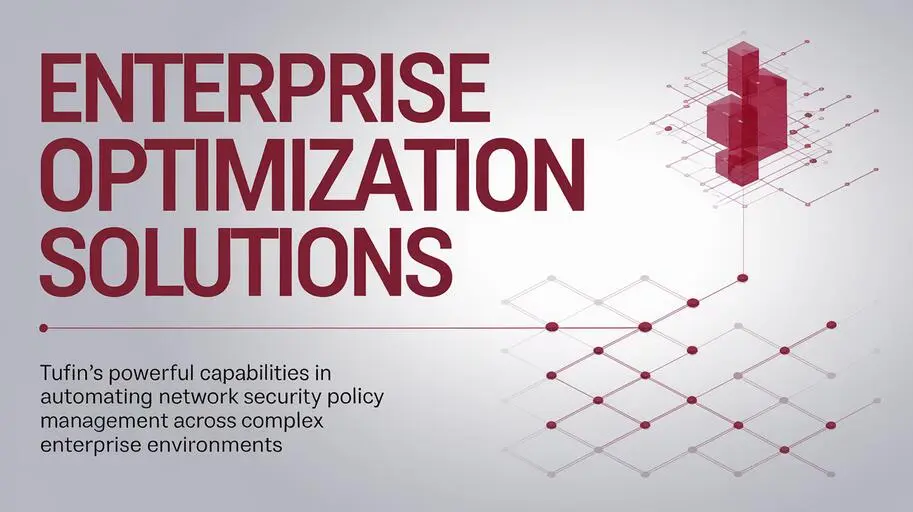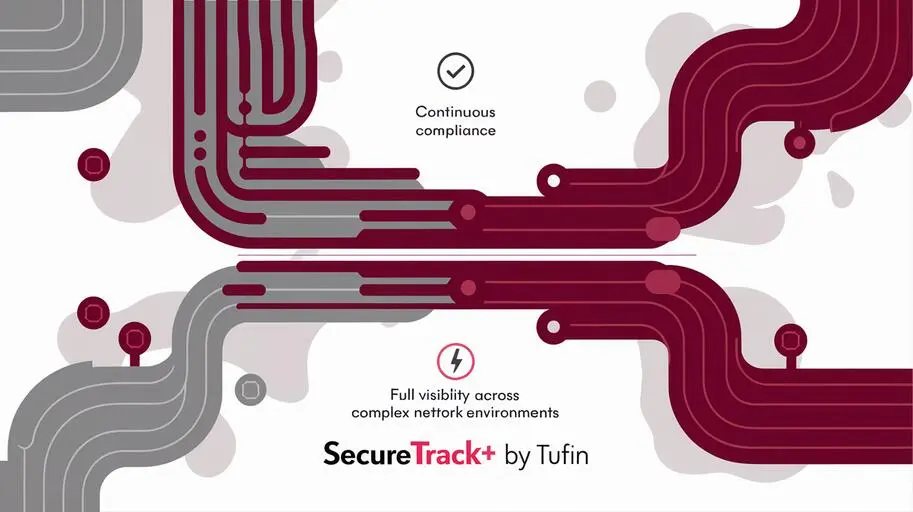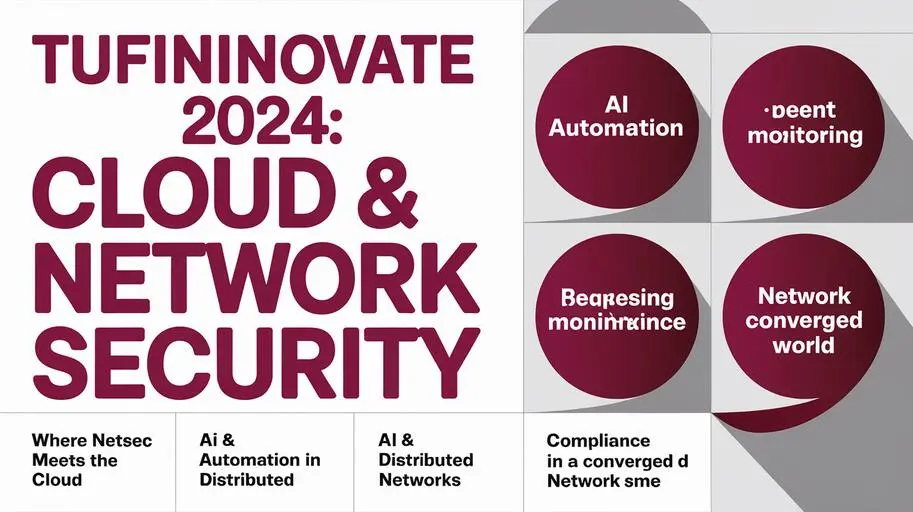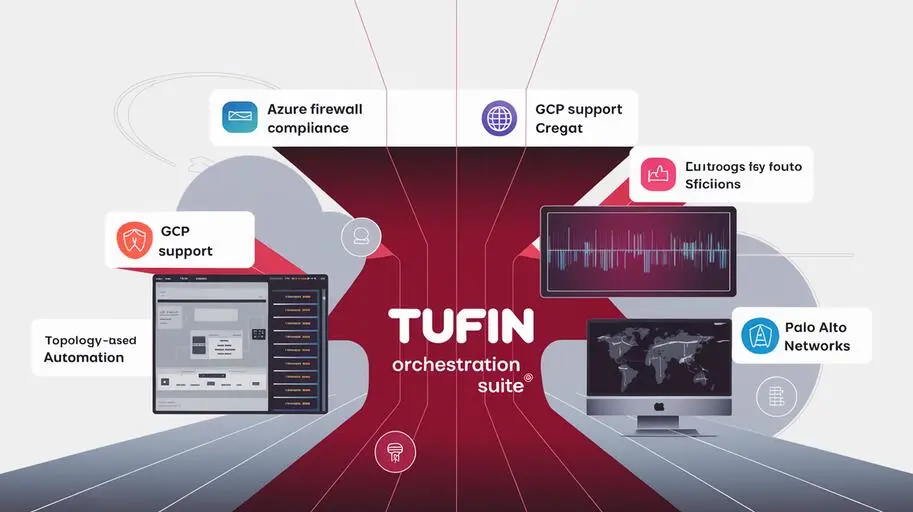
Modern networks are becoming increasingly complex and vulnerable. Traditional perimeter-based network security approaches no longer provide adequate protection. Once inside the network, attackers gain access to many resources. Critical data is at risk. In particular, lateral movement of attackers is a key problem that microsegmentation aims to solve. The solution is microsegmentation, and Tufin Orchestration Suite is a powerful tool for implementing and automating it.
What is Microsegmentation and Why is it Needed?
Microsegmentation is a network security strategy that divides a network into small, isolated segments. This limits the movement of attackers within the network and prevents the spread of threats. Unlike traditional segmentation, which operates with large network blocks, microsegmentation provides granular access control at the level of individual workloads, applications, and even processes.
To understand the difference, consider an example. Traditional segmentation might use VLANs and ACLs (Access Control Lists) on switches to separate the network into departments. Microsegmentation goes further, dividing even resources within the same department, restricting access between servers to only the necessary ports and protocols.
Benefits of Microsegmentation:
- Reduced attack surface: By limiting the movement of attackers, microsegmentation minimizes the damage from successful attacks.
- Improved protection of critical data: Allows you to isolate and protect the most valuable assets.
- Regulatory compliance: Helps organizations comply with regulatory requirements, such as PCI DSS (requires network segmentation to protect credit card data), HIPAA, and GDPR.
- Simplified security management: Allows you to centrally manage security policies and control access to resources. However, it is worth noting that effective microsegmentation management requires specialized tools such as Tufin, otherwise the configuration complexity may outweigh the benefits.
Tufin Orchestration Suite: A Centralized Platform for Microsegmentation
Tufin Orchestration Suite is a platform that automates and simplifies the management of security policies in hybrid and multi-cloud environments. It provides a centralized view of the network infrastructure and allows you to create, modify, and apply security policies for various types of devices, including firewalls, virtual switches, and cloud services.
Key components of the Tufin Orchestration Suite:
- Tufin SecureTrack: Provides visibility and control over the network infrastructure. It collects data from various security devices, analyzes traffic, and identifies potential risks.
- Tufin SecureChange: Automates the process of making changes to security policies. It allows users to request changes, assess their impact, and approve them according to predefined rules.
- Tufin SecureApp: Manages the relationships between applications and infrastructure. It allows you to define access policies for individual applications and protect them from unauthorized access. This is a key point for microsegmentation, as it allows you to determine which applications should interact with each other.
SecureTrack and SecureChange work together to provide a continuous loop of security policy management: SecureTrack discovers and analyzes, SecureChange automates the making of changes, and SecureTrack verifies the results.
How Does Tufin Implement Microsegmentation?
Tufin Orchestration Suite provides a comprehensive set of tools for implementing microsegmentation in your network. It allows you to centrally manage security policies, automate the process of making changes, and provide constant monitoring of compliance with regulatory requirements.
Steps for Implementing Microsegmentation with Tufin:
- Network infrastructure analysis: Tufin SecureTrack automatically discovers network connections and dependencies between various components of your infrastructure. It creates a network map that shows how traffic moves between different segments, applications, and users.
- Defining microsegmentation policies: Based on the collected data, you can define microsegmentation policies that will regulate access to resources in your network. Tufin allows you to create policies based on various criteria, such as IP addresses, ports, users, groups, and application types. Tufin supports both “white listing” (allowing only what is necessary) and “black listing” (disallowing what is unwanted) approaches to policy definition.
- Security policy deployment: Tufin SecureChange automates the process of deploying security policies on various security devices, such as firewalls, virtual switches, and cloud services. It checks the correctness of the configuration and ensures compliance with regulatory requirements. SecureChange uses workflow to automate the approval and deployment process of changes, which ensures compliance with company policies.
- Monitoring and auditing: Tufin constantly monitors compliance with security policies and identifies potential risks. It generates reports on policy violations, unauthorized access, and other suspicious activities.
Technical Details and Functionality of Tufin Orchestration Suite for Microsegmentation
Tufin Orchestration Suite provides advanced capabilities for configuring and managing microsegmentation policies. Let’s consider some of them in more detail.
Automatic Discovery of Network Connections:
Tufin SecureTrack uses various methods for automatically discovering network connections, including traffic analysis, equipment configuration, and log analysis. It creates a dynamic network map that reflects the current state of your infrastructure. This map allows you to understand how traffic moves between different components and identify potential vulnerabilities. Tufin uses protocols such as SNMP, NetFlow/sFlow, and APIs to collect data from various devices. SecureTrack uses machine learning algorithms to identify traffic anomalies.
Tufin Microsegmentation Policies:
Tufin allows you to create microsegmentation policies based on various criteria:
- IP addresses and subnets: Restricting access at the IP address and subnet level.
- Ports and protocols: Controlling access to specific ports and protocols.
- Applications: Access policies based on application identification.
- Users and groups: Integration with Active Directory and other Identity Management systems for role-based access control.
- Security zones: Combining resources into logical security zones and defining access policies between them.
You can create policies based on tags and attributes, which is especially important in cloud environments and containers.

Integration with various platforms:
Tufin Orchestration Suite integrates with a wide range of security platforms and devices, including:
- Firewalls: Check Point, Cisco, Palo Alto Networks, Fortinet, etc.
- Virtualization: VMware, Hyper-V.
- Cloud platforms: AWS, Azure, GCP.
- Containers: Docker, Kubernetes.
- SIEM systems: Splunk, QRadar, ArcSight, etc.
Integration with SIEM systems allows Tufin to transmit information about threats and violations of security policies for further analysis and response.
Solving Specific Problems with Tufin
Tufin Orchestration Suite helps solve many problems related to network security and microsegmentation.
Problem: Complexity of managing security policies in hybrid environments.
Solution: Tufin provides a centralized platform for managing security policies in hybrid and multi-cloud environments. It allows users to see and control all their security devices from a single console. This simplifies security policy management and ensures their consistency across the infrastructure.
Problem: Slow and error-prone manual change processes.
Solution: Tufin SecureChange automates the process of making changes to security policies. It allows users to request changes, assess their impact, and approve them according to predefined rules. This speeds up the change process, reduces the risk of errors, and ensures compliance with regulatory requirements.
Problem: Lack of visibility into network traffic and potential threats.
Solution: Tufin SecureTrack provides visibility and control over network traffic. It collects data from various security devices, analyzes traffic, and identifies potential risks. This allows users to quickly respond to threats and prevent their spread.
Problem: Regulatory compliance.
Solution: Tufin Orchestration Suite helps organizations comply with regulatory requirements such as PCI DSS, HIPAA, and GDPR. It provides tools for monitoring security policy compliance and generates reports on violations. This simplifies the audit process and reduces the risk of penalties for non-compliance.
For example: Company X had difficulty managing security policies on 500 firewalls from various vendors. After implementing Tufin Orchestration Suite, the time to make changes was reduced by 80%, and the number of configuration errors decreased by 95%.
Microsegmentation in the Zero Trust Concept with Tufin
Zero Trust is a security model that assumes that no user or device should be automatically trusted, regardless of whether they are inside or outside the network. Microsegmentation is a key component of a Zero Trust strategy, as it allows you to limit access to resources only to those users and devices that really need them.
Tufin Orchestration Suite helps implement the principles of Zero Trust through:
- Granular access control: Tufin allows you to create microsegmentation policies that restrict access to resources at the level of individual applications and users. Tufin allows you to implement the principle of “least privilege”, providing access only to those resources that are necessary to perform a specific task.
- Constant authentication: Tufin integrates with Identity Management systems to authenticate users and devices each time they access resources.
- Tufin’s Microsegmentation in the Zero Trust concept: Tufin Orchestration Suite helps implement the principles of Zero Trust by providing granular access control, constant authentication, and continuous security monitoring. SecureChange automates the approval of security policy changes, which is an important aspect of Zero Trust.
Tufin for DevOps and CI/CD
In modern organizations where DevOps and CI/CD methodologies are actively used, security must be integrated into the application development and deployment process. Tufin Orchestration Suite helps automate the security policy management process in CI/CD pipelines and ensures compliance with regulatory requirements.
Tufin allows you to:
- Automate the deployment of security policies: Tufin SecureChange integrates with CI/CD pipelines and allows you to automatically deploy security policies with each code change. This is achieved by using the API to automatically verify compliance with security policies at each stage of deployment.
- Automated risk analysis: Tufin SecureTrack analyzes changes in network infrastructure and identifies potential risks.
- Integration with DevOps tools: Tufin integrates with popular DevOps tools such as Jenkins, Ansible, and Terraform.
For example, the Tufin SecureChange API can be called from a Jenkins pipeline to automatically request a change to firewall rules when a new application is deployed. SecureChange will check the request for policy compliance and, if successfully approved, will automatically make the necessary changes to the firewall configuration.
Conclusion
In the face of ever-increasing cyber threats, microsegmentation is becoming a necessary measure to ensure reliable protection of your network. Tufin’s Microsegmentation Solutions, in particular Tufin Orchestration Suite, offer a comprehensive and automated approach to managing security policies, allowing you to significantly reduce risks, ensure compliance, and create a solid foundation for a Zero Trust architecture. Unlike many other solutions, Tufin supports a wide range of security devices and cloud platforms, making it a versatile solution for hybrid environments. Centralized management, change automation, and constant monitoring make Tufin a valuable asset for any organization striving for maximum network security.
If you would like to learn more about how Tufin Orchestration Suite can help you implement microsegmentation and strengthen your organization’s network security, request a free security assessment of your network using Tufin SecureTrack.
FAQs on: Microsegmentation with Tufin
-
What is microsegmentation and why is it needed?
Microsegmentation is a network security strategy that divides the network into small, isolated segments, limiting the movement of attackers and preventing the spread of threats. This allows for granular access control at the level of individual workloads, applications, and even processes.
-
What are the main benefits of microsegmentation?
Microsegmentation provides a reduced attack surface, improved protection of critical data, compliance with regulatory requirements (PCI DSS, HIPAA, GDPR), and simplified security management.
-
What is Tufin Orchestration Suite and what is it used for?
Tufin Orchestration Suite is a platform that automates and simplifies security policy management in hybrid and multi-cloud environments. It provides a centralized view of the network infrastructure and allows you to create, modify, and apply security policies.
-
What are the key components of the Tufin Orchestration Suite?
The main components of Tufin Orchestration Suite are: Tufin SecureTrack (visibility and control), Tufin SecureChange (policy change automation), and Tufin SecureApp (application-to-infrastructure connectivity management).
-
How does Tufin implement microsegmentation?
Tufin implements microsegmentation through centralized security policy management, change automation, and continuous compliance monitoring. This includes network infrastructure analysis, policy definition, deployment, and monitoring.
-
What criteria can be used to define microsegmentation policies in Tufin?
Microsegmentation policies in Tufin can be defined based on IP addresses, ports, users, groups (Active Directory), and application types.
-
With which platforms does Tufin Orchestration Suite integrate?
Tufin integrates with a wide range of platforms, including firewalls (Check Point, Cisco, Palo Alto Networks), virtualization (VMware, Hyper-V), cloud platforms (AWS, Azure, GCP), containers (Docker, Kubernetes), and SIEM systems (Splunk, QRadar, ArcSight).
-
How does Tufin help ensure compliance with regulatory requirements?
Tufin provides tools to monitor security policy compliance with regulatory requirements (PCI DSS, HIPAA, GDPR) and generates reports on violations, simplifying the audit process.
-
What is the role of microsegmentation in the Zero Trust concept and how does Tufin help to implement it?
Microsegmentation is a key component of Zero Trust, limiting access to resources only to those who need them. Tufin helps implement Zero Trust through granular access control, continuous authentication, and continuous security monitoring.
-
How is Tufin used in DevOps and CI/CD?
Tufin automates security policy management in CI/CD pipelines, ensuring compliance with regulatory requirements. It integrates with Jenkins, Ansible, and Terraform, automating policy deployment and risk analysis.




